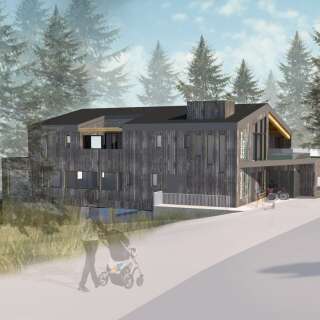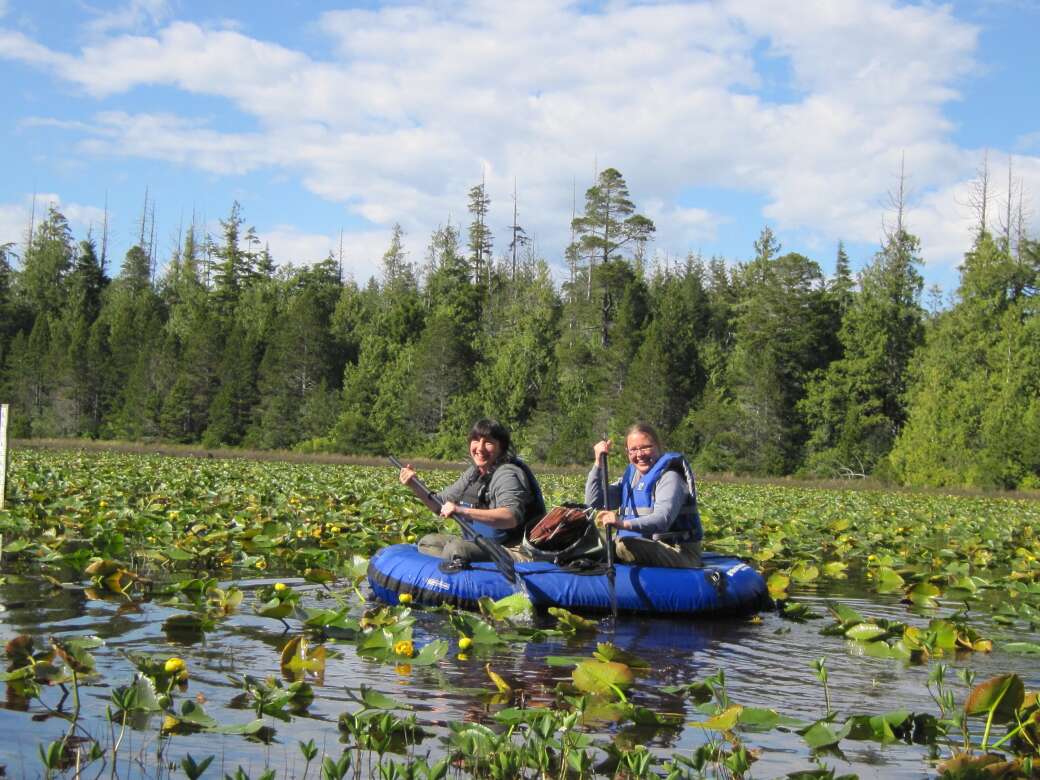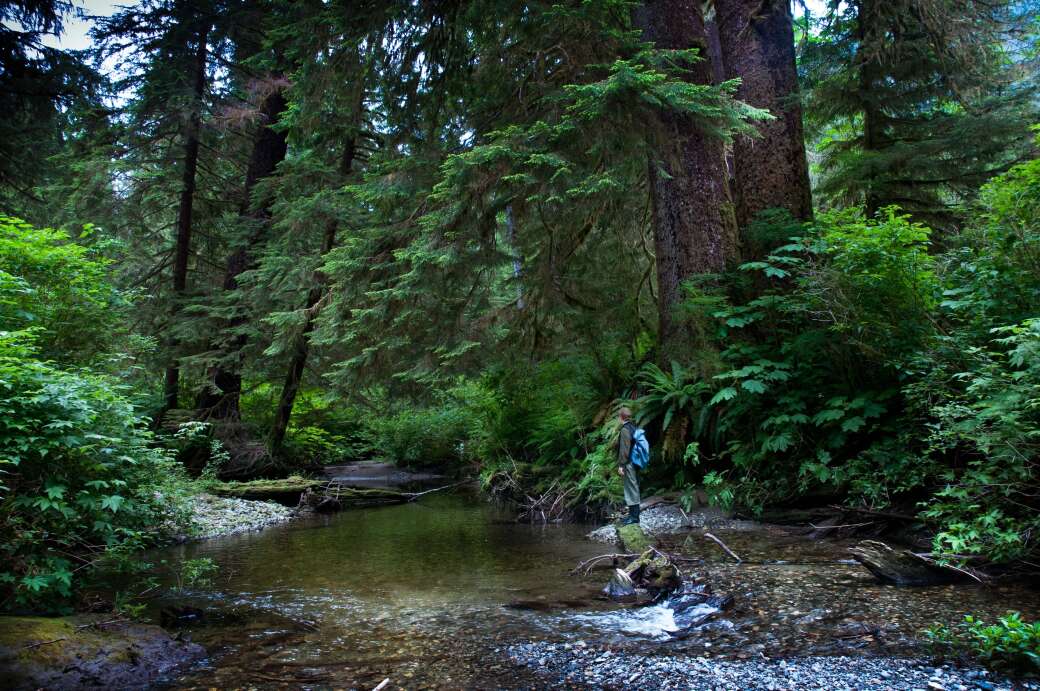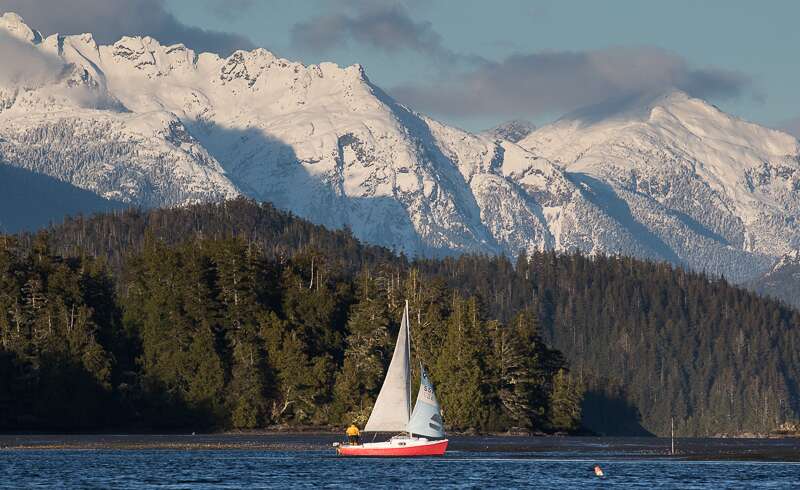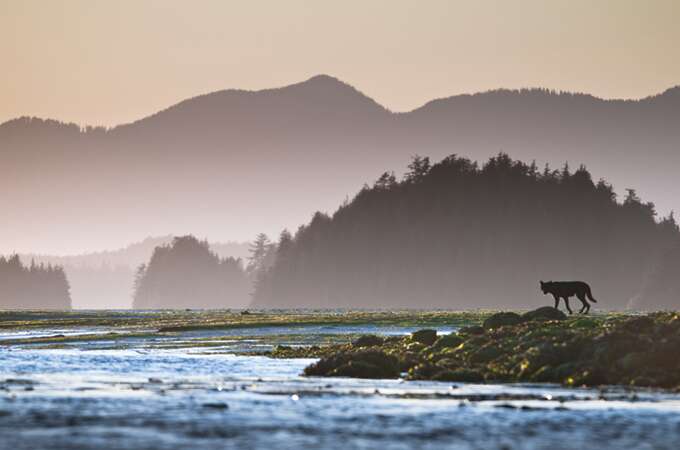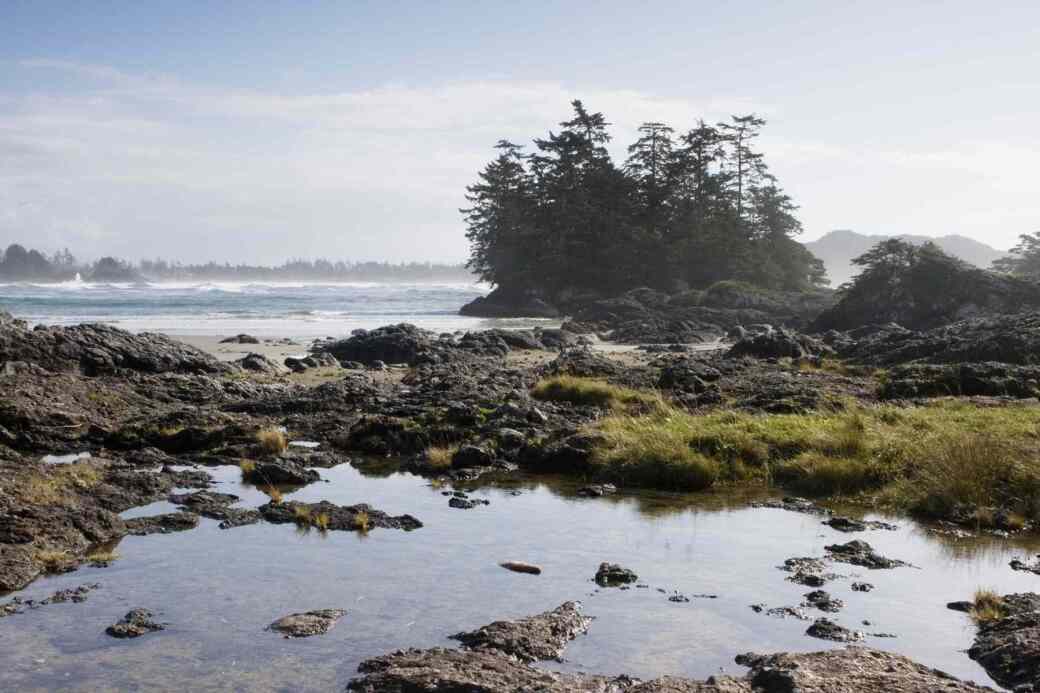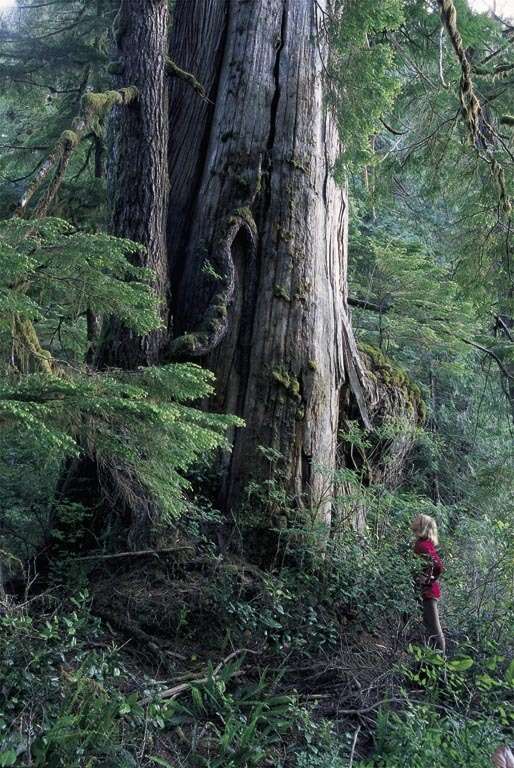
Temperate rainforest
95% of the Clayoquot Sound Biosphere is temperate rainforest and more than half of this is considered highly productive old growth (older than 250 years and produces high biodiversity). Old growth temperate rainforest ecosystems are highly complex, consisting of multiple layers of understory, high canopies, large woody debris, creating numerous habitats supporting for higher biodiversity than second-growth forests. Some old growth forest stands on the west coast of Vancouver Island are over 6,000 years old, meaning they have not been disturbed by fire or stand-replacing windthrow events for that duration. Researchers have found individual trees to be older than 1,400 years and with a diameter of 15 metres.
Old-growth forests in Clayoquot Sound can represent true all-aged stands. For instance, in one stand containing amabilis fir, western red cedar, yellow-cedar, and western hemlock, ages were distributed continuously from young saplings to trees almost 1,000 years old. These forests are structurally complex and provide microhabitats for a great variety of plants, animals, fungi, and micro-organisms.


